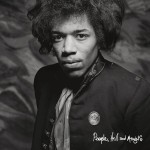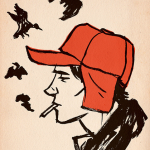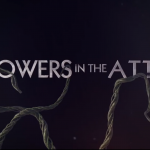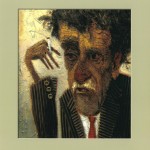Every week in The Kiddy Pool, Erin Newcomb confronts one of many issues that parents must deal with related to popular culture.
Beware the monster in the mirror; it might just be you.
My little one loves to look at her reflection. Few things make her light up like looking at herself. If she gets to a place where there are low mirrors (like the children’s museum or the kids’ space at the library or a nasty public bathroom), she speed-crawls over and tries to lick that little mirror baby. Ah, love. I find this stage so interesting (probably from reading too much Lacan). It’s the developmental turning point where we learn to see ourselves as separate, distinct individuals. Yet in the mirror we also see ourselves outside of ourselves, and we begin to recognize the fragmentation of self—that we can never see our whole selves all at once.
We see ourselves, to paraphrase 1 Corinthians 13:12, dimly reflected, unable to discern the true picture with our earthly eyes. How appropriate then, that a child’s first delight upon gazing at herself in a looking glass is accompanied by a kind of barrier. As the child learns “I,” she also learns she is not mother, not father, not sister. She may, as in the case of my second girl, have her father’s eyes, but she is her own I, uniquely crafted in the image of God to do things that we can’t foretell as we smile into the looking glass. Mirrors show us ourselves, but they can only do so through fragmentation, through refracting light and breaking up our coherent vision at the most basic levels of science and philosophy.
To put it more simply, think about Grover. As he calls himself, “lovable, furry old Grover.” That’s his self-description in the children’s story The Monster at the End of This Book, where he warns the audience of the terrible news delivered by the text’s title. It turns out, of course, that Grover is the monster, from beginning to end. He expresses his embarrassment at the book’s conclusion, but that doesn’t change his monstrosity. It’s just that he, like so many of his Sesame Street pals, is a friendly monster, an oxymoron if ever there was one. A similar theme runs through the song “The Monster in the Mirror,” where Grover wakes up and sings with his reflection. It’s a great opportunity for yelling “WUBBA” at your loved ones, and I recommend the song on that merit alone. One verse of the song goes like this:
If your mirror has a monster in it, do not shout.
This kind of situation does not call for freaking out.
And do nothing that you would not like to see him do.
‘Cause that monster in the mirror he just might be you.
Good advice from Grover. Because behind that smiling visage there’s still a monster. A lovable, furry old monster, perhaps, but a monster just the same.
I came across a similar concept while writing an academic article about Dracula. One scholar spoke of the phenomenon whereby vampires cast no reflection. The writer, John Allen Stevenson, argues “When we say that the vampire is absent from the mirror, perhaps what we are saying is that we are afraid to see a reflection—however uneasy and strange—of ourselves.” According to this argument, the vampire does not appear in the mirror because the vampire is the mirror, the projected image of our collective anxieties about the evil within us. There is more than one kind of monster, and Stoker’s Dracula is by no means lovable and furry (nor is he, like so many contemporary vampires, great boyfriend material). How telling that we sometimes call our children “little monsters,” indicative of the Grover and Dracula reflected along with the joy we see when we lick the mirror and find not flesh but glass. Thank heavens that God sees us whole—and sees beyond the monsters in the mirrors and within us.












